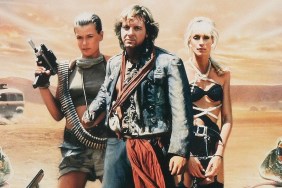Matthias Stork for Press Play has put together a two-part, twenty minute video essay taking a look at the current state of filmmaking and something he defines as “Chaos Cinema”. His introduction gives his description of how he sees the first century of filmmaking:
Throughout the initial century of moviemaking, the default style of commercial cinema was classical; it was meticulous and patient. At least in theory, every composition and camera move had a meaning, a purpose. Movies did not cut without good reason, as it was considered sloppy, even amateurish. Mainstream films once prided themselves on keeping you the viewer well-oriented because they wanted to make sure you always knew where you were and what was happening.
He transitions from examples such as Bullitt, The Wild Bunch, John Woo’s Hard Boiled and John McTiernan’s Die Hard into shots of Michael Bay’s Transformers: Revenge of the Fallen, Christopher Nolan’s Inception, Bay’s Bad Boys 2 and Marc Forster’s Quantum of Solace as he points out how in the first decade of the 21st century, film style changed profoundly:
Chaos cinema apes the illiteracy of the modern movie trailer. It consists of a barrage of high-voltage scenes. Every single frame runs on adrenaline. Every shot feels like the hysterical climax of a scene which an earlier movie might have spent several minutes building toward. Chaos cinema is a never-ending crescendo of flair and spectacle. It’s a shotgun aesthetic, firing a wide swath of sensationalistic technique that tears the old classical filmmaking style to bits. Directors who work in this mode aren’t interested in spatial clarity. It doesn’t matter where you are, and it barely matters if you know what’s happening onscreen. The new action films are fast, florid, volatile audiovisual war zones.
He goes on to note how visual clarity has been replaced by audio explanation and how sound plays a much larger role in films today, but goes on to say “sound and image should be complementary, and they should be communicative” rather than one making up for the mess of the other.
One exception is given to Kathryn Bigelow’s The Hurt Locker, saying the film offers the viewer a glimpse at a scene from the character’s perspective, but at the same time detaches itself in an effort to give the audience some understanding of what’s going on. It’s a valid point and I also think the same could be said for Paul Greengrass’ Bourne films, which are featured in the videos, but not commented on for reasons I’m not exactly clear on. I felt Greengrass was attempting to give the viewer a third person, real world approach with his Bourne features and the only real reason they are of note now is because filmmakers took audience love for that immersion and ran wild with it as “shaky cam” became a point of derision as the years went by.
Stork does include Battle: Los Angeles, which I believe could have been better used in a direct comparison with Ridley Scott’s Black Hawk Down. The one was clearly trying to be the other in style and vision, but considering they were two different beasts I think his point of perspective would have been hammered home rather than passively commented on in the second video.
As he points out with The Hurt Locker (but not with the Bourne films or Black Hawk Down), this new way of filmmaking can be used to an action director’s advantage and not always a bad thing. Personally, I would also say I’ve never had much of a problem following these action scenes in the way Stork seems to, but then again I’ve always enjoyed excellent sound design, which is one of the reasons I also love the opening car chase from Quantum of Solace, of which Stork rips apart. As a film that is meant to directly move from Casino Royale, I thought that sequence immediately thrust you back into the story at a breathless pace. Yes, you may be disoriented and weary afterward, but I was always under the impression that was the intention. Get your heart racing and your mind into the action, the exposition followed shortly thereafter to help you gain your bearings.
This isn’t to say I’m a fan of this new style of filmmaking, it gives me a headache in a lot of cases just like everyone else and for the most part a lot of the glossy, commercial-style editing has turned most action scenes into non-starters. They all roll together and aren’t necessarily hard to understand, but instead hard to care about. There are filmmakers, however, that are doing it right, but as Greengrass showed with Green Zone, even those with an understanding of the medium sometimes get it wrong and even Christopher Nolan’s Batman Begins and The Dark Knight aren’t free from exception as they too move in a little too close at times in an attempt to gain intimacy, but sometimes losing clarity.
Watch the two videos below, I would love to hear what you think.










